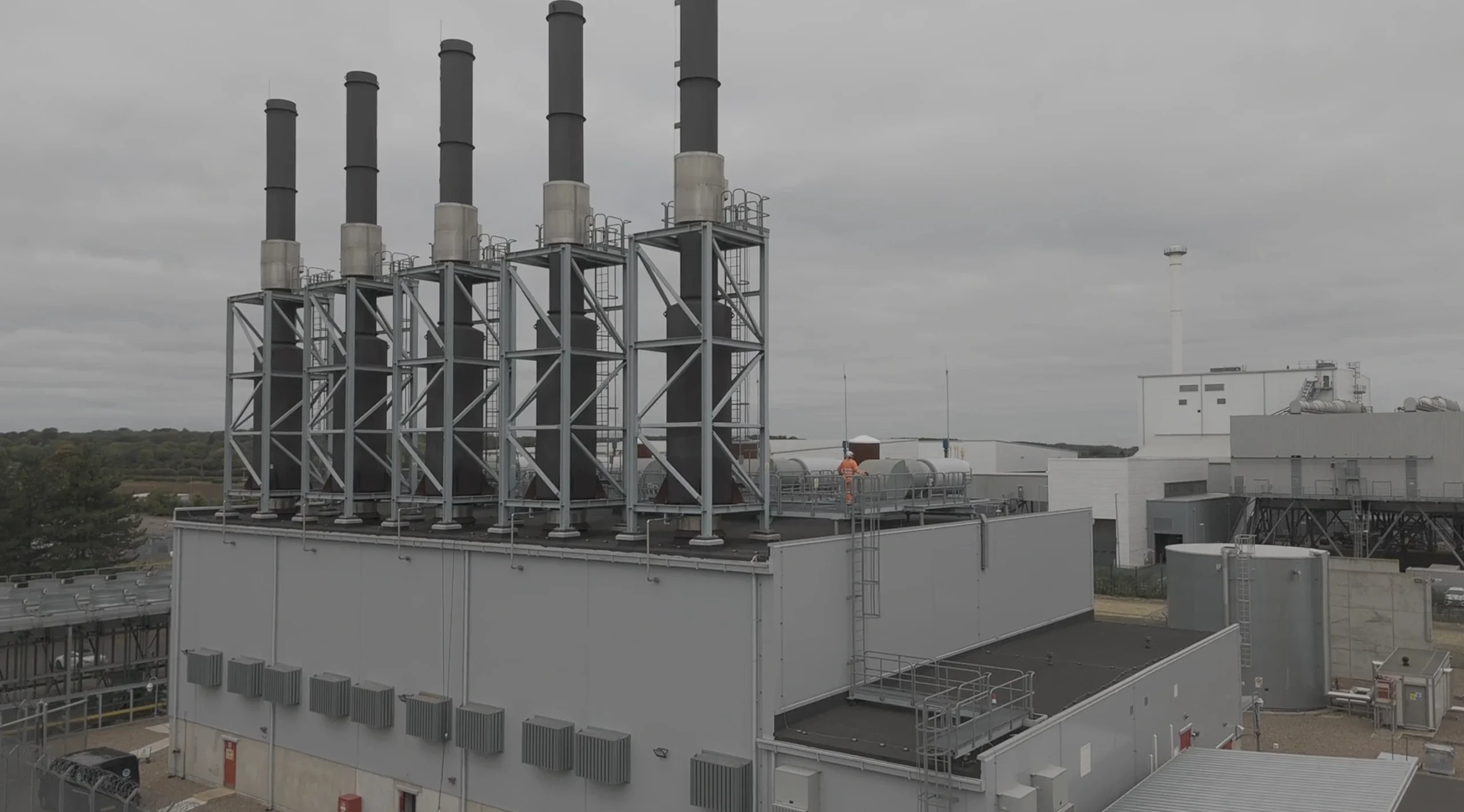
Hydrogen has been blended into the National Transmission System (NTS), the UK’s high-pressure gas grid, for the first time in a trial completed on 9 October by Centrica (the parent company of British Gas) and National Gas (the operator of the NTS).
The trial involved National Gas injecting a 2% blend of green hydrogen into the gas grid, before being blended with natural gas to generate power at Centrica’s Brigg Power Station in Lincolnshire (pictured, above). This electricity was then fed directly into the national grid, demonstrating what the companies described as the first “end-to-end” test of hydrogen integration into UK energy infrastructure.
The results confirm that hydrogen blending is technically and operationally viable, meaning gas-fired power stations could in future accept hydrogen mixtures without major modification. The companies said the breakthrough supports the UK government’s Clean Power by 2030 target by offering a practical step toward decarbonising the energy system.
“This successful trial marks a significant milestone in the development of the UK’s hydrogen economy – an essential piece of the puzzle in the UK’s journey to a low carbon, homegrown energy system,” said Chris O’Shea, Chief Executive of Centrica.
Beyond power generation, Centrica and National Gas say that hydrogen blending could stimulate investment in hydrogen production, create skilled jobs, and boost regional economies such as the Humber — where Centrica is developing its Green Hydrogen facility at Easington and the proposed Humber Hydrogen Pipeline.
The trial comes alongside the completion of a government consultation on hydrogen blending into the gas network, in which the government is proposing blending up to 2% hydrogen to support the development of the UK’s hydrogen economy and decarbonise the gas grid.
Jon Butterworth, Chief Executive Officer of National Gas, said: “By using our existing National Gas infrastructure, pipes that have reliably served Britain for decades, we can power the next era of clean British energy and industry. Working with industry and government, we’re proud to be leading this effort to make hydrogen a cornerstone of our energy system.”
The test builds on National Gas’s earlier FutureGrid project in Cumbria, which used decommissioned sections of the NTS to trial hydrogen blends in a controlled environment.
Union leaders also welcomed the announcement. Gary Smith, General Secretary of the GMB Union, said the trial “highlights the vital role that innovation across our industrial heartlands can play in creating highly skilled, unionised jobs in working-class communities, an essential part of any credible plan to meet our net-zero obligations.”

